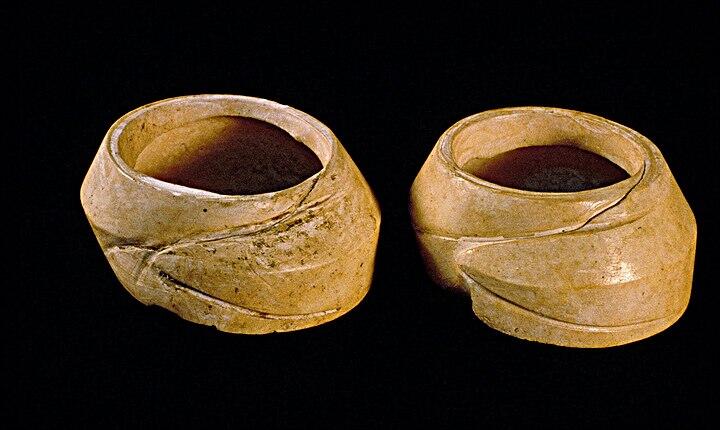In order to manufacture shell bangles from T. pyrum, the shell was first hollowed out by perforating the apex and breaking the internal septa using a long copper pick or chisel. The shell was then sawn at a diagonal to remove rough circlets, which were ground and polished to produce beautiful bangles
Recent explorations in the peripheral regions east of the Indus valley have established the spread of Harappan culture to settlements in Kutch, Saurashtra, Rajasthan and Harayana, but there has been much speculation on the reasons behind this cultural expansion. The discovery of Nageswara on the southern shore of the Gulf of Kutch, Gujarat, has provided important new information regarding the Harappan expansion in this region. The site is located on the edge of a fresh water reservoir called Bhimgaja Talao, (22 20' North Lat., 69 6' East Long.) which is associated with an ancient Saivite temple of Nageswara, Mahadeva. This temple is about 17 km northeast along the Dwarka-Gopi, Talao bus route. Since the excavators were interested in removing only the soft organic soil for construction of a dam, leaving large accumulations of potsherds, shel fragments, grinding stones and stone foundations in situ. This unique situation has made it possible to observe important architectural features and distribution of shell manufacturing waste in their original contexts.

